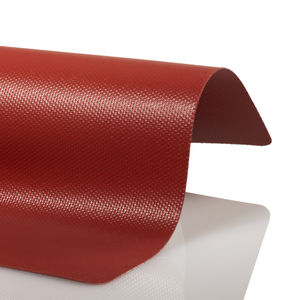
- Industrial machines and equipment
- Welding and Assembly
- Thermal insulation tape
- Polyfluor Plastics bv
- Company
- Products
- Catalogs
- News & Trends
- Exhibitions
Thermal insulation tape Type BP sticPTFEsiliconereinforced

Add to favorites
Compare this product
Characteristics
- Function
- thermal insulation
- Material
- silicone, PTFE
- Other characteristics
- high temperature-resistant, self-adhesive, reinforced
Description
Type BP stic is similar to our type BP, but designed with a self-adhesive silicone layer on one side. This adhesive layer is covered with a release liner. The base material is a glass fibre impregnated with PTFE. The standard silicone adhesive layer is resistant up to a maximum temperature of +250°C. On request, type BP stic is available with acrylic adhesive layer for applications requiring a higher adhesion. This acrylic adhesive can be used up to +120°C. PTFE glass fibre is used in many applications. For example in industrial processes requiring non-stick properties. An important application in the packing industry is the use in heat-seal machines, but also for the coating of molds and (sliding) gutters. Standard packing unit of type BP stic are rolls of 30 mtr, in various widths. Other lengths are available on request. The most common thicknesses are 0,08 mm/0,11 mm/0,12 mm/0,21 mm. The standard colour of PTFE glass fibre is light brown. Other colours available on request. Our sales engineers are at your service when you want to determine the right formula for your application.
Key properties PTFE glass fibre
Excellent chemical resistance
Good anti-stick properties
Easy to clean
Low friction coefficient from 0.04 to 0.10 (depending on load, transport speed and temperature)
Excellent electrical, insulation and dielectric properties
Foods suitable (USFDA)
More information?
Please contact our sales engineers if you require more information, an inquiry or to evaluate samples. Or download our technical data sheets.
Catalogs
Other Polyfluor Plastics bv products
PTFE glass fibre belts&tapes
*Prices are pre-tax. They exclude delivery charges and customs duties and do not include additional charges for installation or activation options. Prices are indicative only and may vary by country, with changes to the cost of raw materials and exchange rates.









